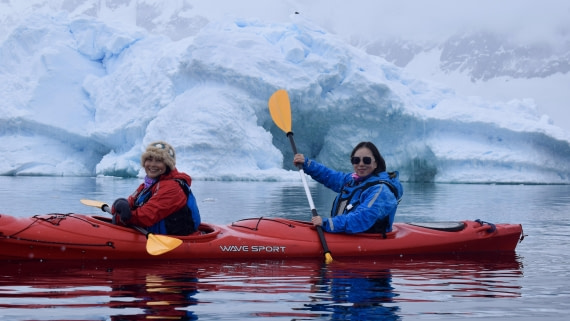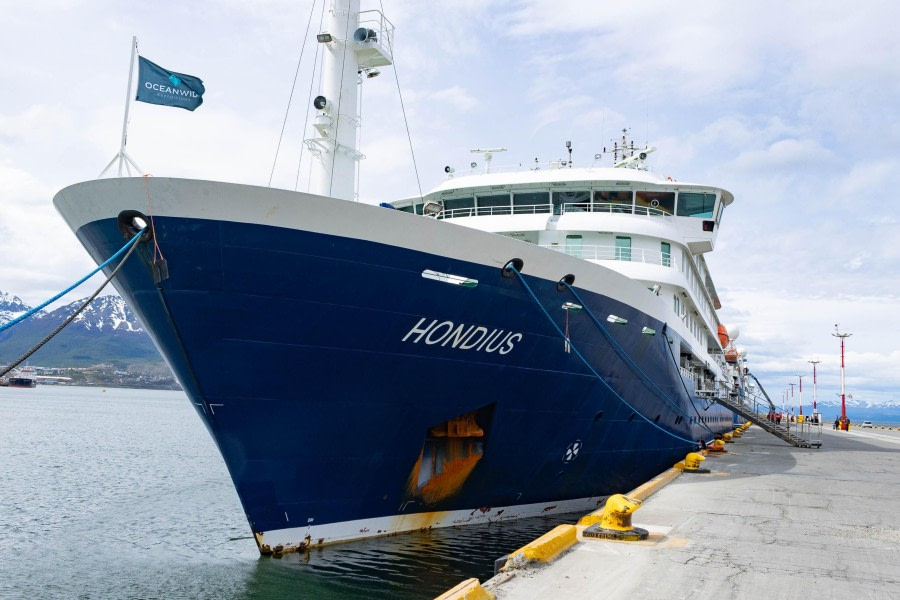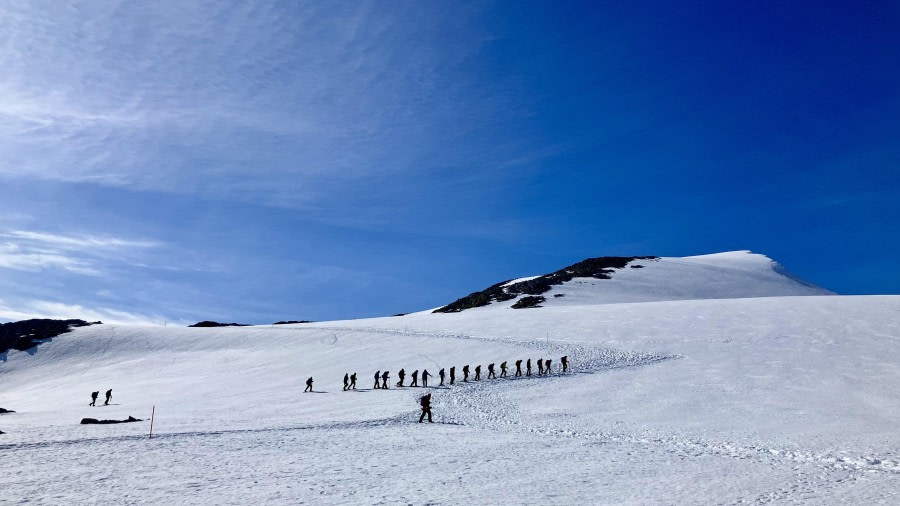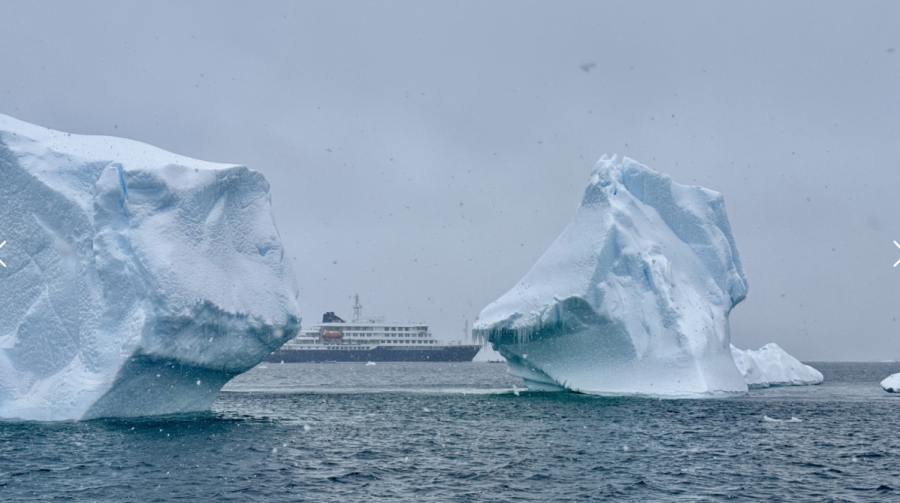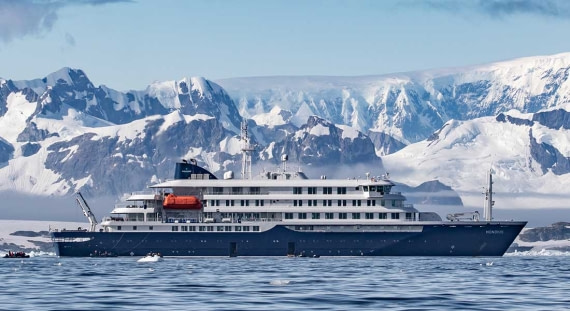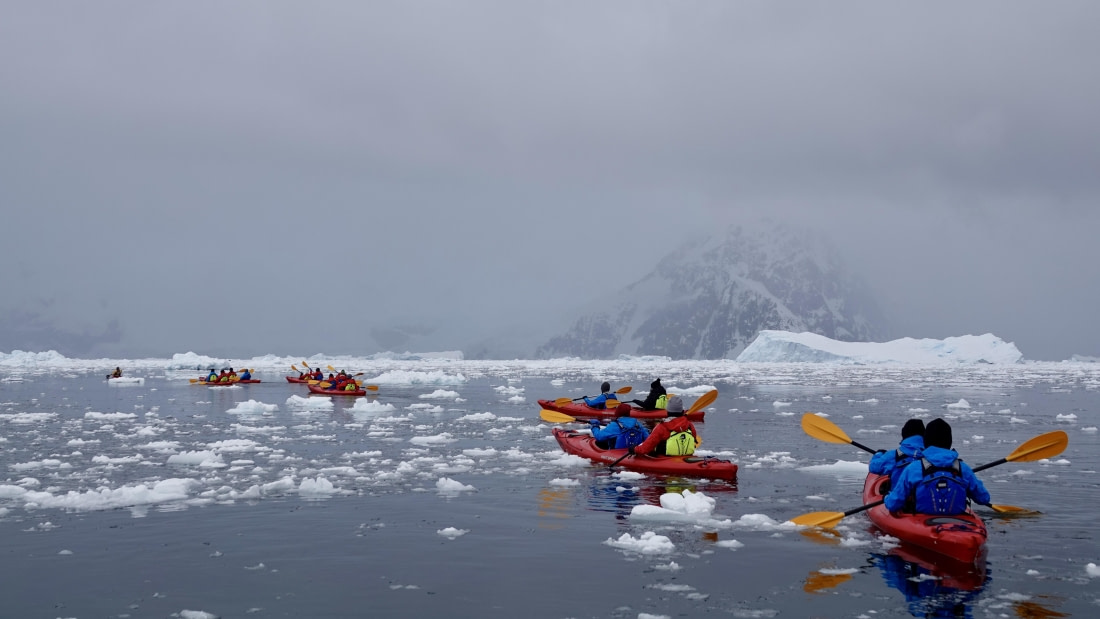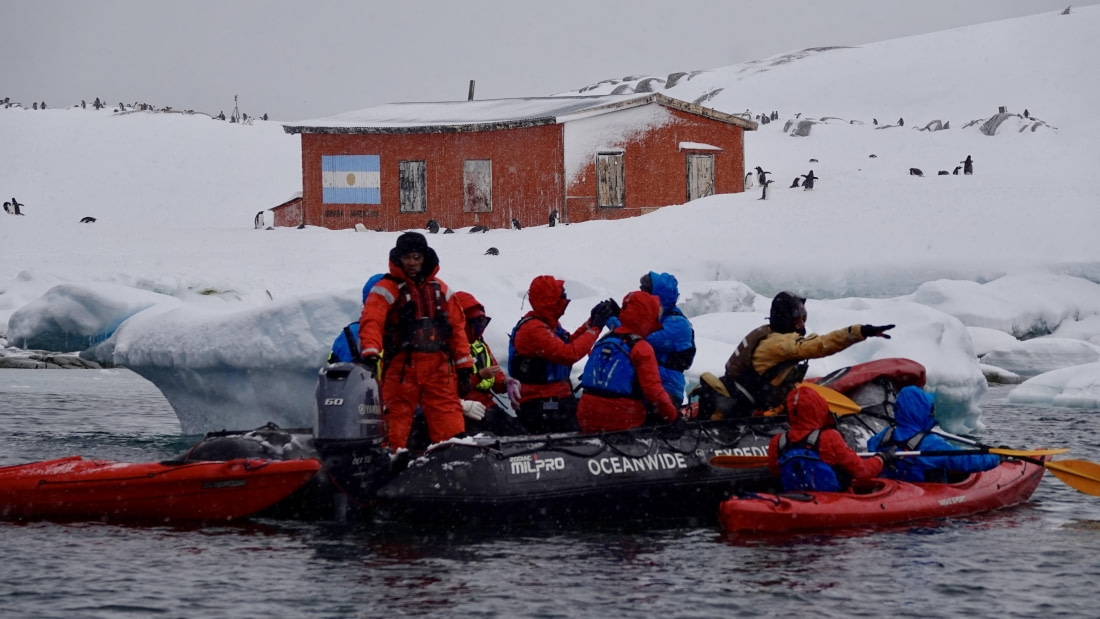| Date: |
26.11.2024 |
| Position: |
64°08.3’S / 061°47.2’W |
| Le vent: |
W1 |
| Météo: |
Overcast |
| Température de l'air: |
+6 |
With the morning wake-up call from our Expedition Leader, everyone excitedly got out of bed. After a quick breakfast, we eagerly awaited the first day's activities of our Antarctic adventure.
Today’s activity location is Palaver Point. In the morning, we first allowed the mountaineering group passengers to disembark and head to the landing site. Then, the other two groups followed with their landing activities, followed by a Zodiac cruise, and finally the kayaking participants. The weather was perfect—bright sunshine, calm winds, and smooth seas. At the landing site, we encountered many chinstrap penguins, and the sight was incredible. From the highest point, we could see icebergs floating in the sea, and the beautiful mountain range was covered in snow and ice. After spending over an hour exploring the area, guests continued with the Zodiac cruise activity. During the cruise, everyone had the opportunity to enjoy massive icebergs and penguin colonies along the shore. The morning's activities ended in happy laughter, and all passengers returned to the ship by 11:45 AM.
For the kayakers, the first morning of our Antarctic adventure began under bright cloudless skies, with only a gentle breeze rippling the waters of the Palaver Point landing site. Our team of intrepid kayakers deployed from the Zodiacs to the kayaks and began an exploration of the headland. Heading south past a noisy colony of gentoo and chinstrap penguins, we rounded a pair of stranded icebergs to encounter the open waters of Palaver Point’s western shoreline. Our kayakers confidently navigated a cluster of small icebergs, past a resting crabeater seal, before arriving on the south side of the headland. Here we found a real sense of isolation, with only penguins and giant petrels for company. Our return journey followed a more offshore route in a 1-meter ocean swell, as the gentle breeze assisted our progress back to the landing site. We returned to Hondius, marveling at our exceptional Antarctic kayak adventure.
Day one of mountaineering was simply stunning! Blue skies and huge vistas as we ascended to the high point of Palaver Point on Two Hummock Island, located in the Palmer Archipelago to the west of the Antarctic Peninsula mainland. What a literal high to start on!
Lunch was a delicious buffet was served and afterward, guests could relax and rest as the ship sailed toward the next activity destination—Foyn Harbour. Foyn Harbour is a place rich in history with the wreck of the Whaling ship the ‘Governoren’ lying in the bay which has done so since 1915. in the afternoon, we conducted a two-and-a-half-hour Zodiac cruise. During this, visitors not only marvelled at the spectacular scenery, but also learned about the region’s exploration history. We saw abandoned whaling ships, dilapidated wooden water boats, icebergs, and seals.
Our mountaineers explored the flanks of the harbor itself, renowned for the wreck of the whaling ship Governoren. Avalanche prone slopes in the upper reaches of our ascent foiled our plan to access the higher plateau. We enjoyed a circular loop of the high ground around us and enjoyed the magnificence of our surroundings.
Once back on the ship, everyone had some time to rest. At 6:15 PM, we gathered in the observation lounge for a briefing on the day's activities and plans for the following day. Charlotte shared knowledge about the Weddell seals we saw during the cruise and George provided detailed instructions for the upcoming camping night activity.
Dinner was served shortly after, and as everyone enjoyed the meal, they exchanged stories and excitement about the day's adventures. After dinner, we landed on the first night of camping in Antarctica, with the camping site chosen at Punta Andrews. Tonight, one-third of the passengers would head to the campsite, and everyone was filled with anticipation and a bit of nervousness. For most, this would be a unique and unforgettable experience.
Our afternoon kayak adventure took place at the magnificent Foyn Harbour on Enterprise Island, in breezy cloudy weather that offered a taste of Antarctica’s challenging climate. Our capable group of sea kayakers launched in the shelter of the island’s east-facing coastline, close to the entrance to the Governoren inlet. We ventured into this narrow, protected cove, to view the remains of a shipwrecked whaling vessel, now a seasonal home to nesting Antarctic terns. A cluster of Weddell seals lay hauled out on the flat icy shoreline at the back of the bay. We continued north towards the tip of the island, weaving between grounded icebergs and occasionally battling stronger gusts of wind. Beyond the fine protecting headland, we felt a hint of the powerful waters of the Gerlache Strait, waves lifting our kayaks as we returned downwind around the outside of the island’s rocky outcrops. We finally returned to the ship, to celebrate a wonderful afternoon of coastal Antarctic explorations.
Camping: False Island / Fournier Bay / Anvers Island
64° 29 S 062° 50W
We arrived at our campsite. Our little, own private island surrounded by glaciers and overlooking vast Fournier Bay. We were so excited to be the first group to go camping in this serene environment. We found ourselves a spot to start digging our pits. Meanwhile, a few penguins decided to join us for a brief moment to rest on the edge of our island and looked at how some of us created true ‘villas’, whilst others seemed happy with a tiny ‘one-bedroom’ apartment. There we were, all alone, overwhelmed by the silence of this amazing continent. A frosty night which would forever be in our memories.




